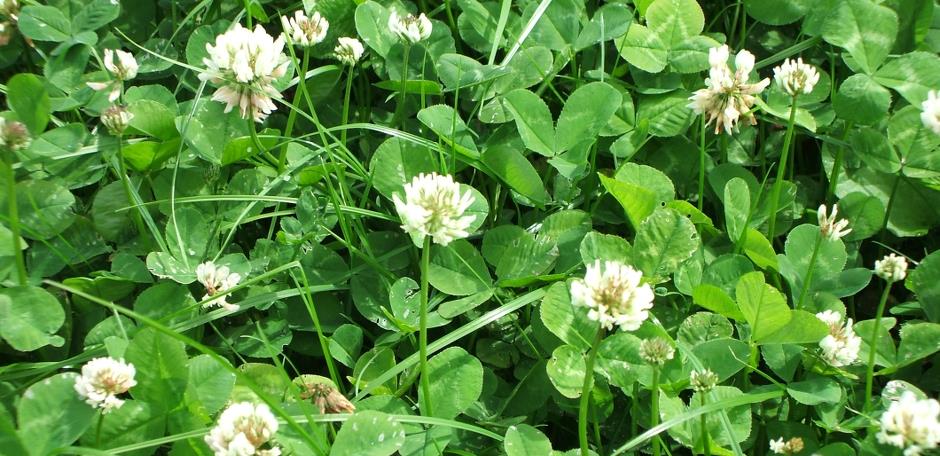Grass and clover in combination within a mixture produce scientifically proven yield benefits versus the same varieties sown individually. White clover has been selected to withstand being grazed or cut, and accordingly the choice of companion grass depends on the primary use of the sward, ie grazing or cutting. The ideal grass is typically ryegrass, as it has good nitrogen use efficiency. This means it can successfully convert the nitrates produced by the clover into plant yield. Note: Research carried out by Teagasc has typically shown increased Dry Matter (DM) yields of 2 tonne/DM ha (Dry matter/hectare) from White Clover and Perennial Ryegrass swards versus a pure Perennial Ryegrass sward.
WHAT IS IN YOUR YOUR SWARD?
Grasses such as Bent, Fescue, Meadow Grass and Yorkshire Fog have lower nitrogen use efficiency, and accordingly do not make good companion grasses where grass yield is the main objective. A full reseed is warranted where the sward is made up of less than 70% Perennial Ryegrass. Our Green Acres grass seed mixtures contain the leading perennial ryegrass and clover varieties. Clover can be successfully added to a sward where adequate levels of perennial ryegrass already exist (>70%); in such circumstances stitching in or ‘overseeding’ White Clover may be the preferred option.
HOW MUCH CLOVER SHOULD BE IN THE SWARD?
 The optimum amount of clover in a field across the full season is 30% of the dry matter of the total sward. At this level, clover can fix 150kg Nitrogen/ha per year and both animal and companion grass performance benefits.
The optimum amount of clover in a field across the full season is 30% of the dry matter of the total sward. At this level, clover can fix 150kg Nitrogen/ha per year and both animal and companion grass performance benefits.
NB: Grazing trials at Teagasc Grange demonstrate that well managed grass/clover swards receiving only 50kg N/ha (40 units N/acre) in spring are capable of producing the same animal output as ryegrass swards getting 200 kg N/ ha (160 units/acre).
OVER-SEEDING CLOVER INTO EXISTING GRASSLAND
- Suitable on well-managed grassland – not suitable on old ‘butty’ swards of poor botanical composition.
- Minimise competition from existing plants before sowing by heavy grazing or harrowing to open up the sward.
- Ensure that field fertility is adequate – good lime, P & K levels.
- Ensure soil is sufficiently disturbed to allow seed-to-soil contact and coverage.
- Use a higher seed rate (5kg/ha or 2.0kg/acre) than conventional sowing to compensate for greater seedling loss.
- Apply no fertiliser N for the remainder of the year. The objective is to reduce grass competition and to promote clover growth.
- Mix seed and fertiliser in the field and spread twice; criss-cross the field.
- Apply slurry as required – ideally around 3000 gals/acre of watery slurry.
- After sowing, graze hard in short intensive 3 - 4 day periods every month until clover is well established; and to reduce competition from other plants.
Articles written by: Bill Reilly, Technical Sales Advisor. Drummonds Navan Mob: 086 - 061 2901


